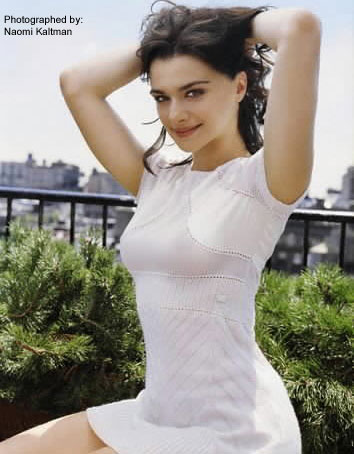
Naushad’s association with Rafi:

Naushad Ali, is probably one of the grand composers of Indian silver screen who had been successful to bring out the Hindustani ragas that were captivated in the darbars of nawabs and feudal lords and simplified them for the common man. Born in 1919, he did spend his childhood in Lucknow, and learned music from Ustad Ghurbat Ali, Ustad Yusuf Ali and Ustad Babban Saheb.
Naushad had shaped the careers of a number of singing legends in the country including Saigal, but his association with Mohammad Rafi had marked the most golden combination which galvanised the outstanding music composed during the golden age in Indian music, the 50s and 60s. His composition in the film Dulari, 1947, for Mohammad Rafi titled “suhani raat dhal chuki” makes a music lover addicted and it has an appeal even after 60 years of its composition.
Baiju Bawra, with Bharat Bhusha and Meena Kumari, in 1952, marks the best creation possible from any composer, it had bhajans, extraordinary use of Hindustani ragas, folk songs and possibly Naushad had been successful to use the range of Rafi to the fullest extent. Other than “woh duniya ke rakhwale”, “tu ganga ki mauj”, there were many songs which explained the relationship of the ragas with rain, the seasons of nature, etc. Naushad received film fare award for the best music composed in that year.
In Uran Khatola, 1955, Naushad’s composition for Rafi, “woh durke musafir, humko bhi saath lele re” showed his capability of using chorus with eastern effect. Naushad’s composition in Son of India, “dil torneewale”, duet for Rafi and Lata, shows the effective use of instruments in that age when recording was not developed to that extent. In Dilip Kumar’s Kohinoor, 1960, Rafi’s songs “madhuban me radhika nachere”, “do sitaron ka zamee par hai Milan aaj ki raat” marks Naushad’s control over bhajans and songs with chorus effects. In Rajender Kumar’s Mere Mehboob, 1963, Naushad had explained the transformation of nasams into ghazals. His songs “mere mehboob tujhe meri mohabbat ki kasam”, “tumse izhaar-e-haal kar baithe”, “ai husn zara jag tujhe isq dikhaye” enchanted the listeners. Naushad’s compositions were as outstanding as Shakeel Badayani’s lyrics and Rafi’s golden voice.
Naushad experimented with his classical control in Leader, 1964, where Rafi’s songs “tere husn ki kya tariff karun”, “ek shahenshah ne banwake haseen tajmahal”, “apni azaadi ko hum hargeez meeta sakte nahi”, had romantic appeal, classical appeal and the symbol of freedom movement embedded in them. Rafi was outstanding in every song in that film. In Dil Diya Dard Liya, 1966, Rafi’s songs “sawan aye ya na aye”, “dilruba maine tere”, “koi sagar dil ko behlata nahi”, “guzre hai” were masterpieces which matched Naushad’s compositions for Lata “phir teri kanani yaad ayi”. Ram Aur Shayam, 1967, the film where Dilip Kumar acted in double roles, had comedy, dance sequences, action and every element for which filmlovers visit cinema halls. Yet Naushad’s composition and Rafi’s songs superseded every other element. The notable songs include “aye hai baharen”, “aaj ki raat mere”, etc.
In Aadmi, 1967, Naushad’s compositions for Rafi including “aaj purani raho par”, “na aadmi ka koi bharosa”, showed the depth of thinking of the composer, where the songs matched the sequences of the film where Dilip Kumar amazed the viewers with his performance in wheel chair. Besides, Naushad had used folk songs to a great extent where the subjects in the films required them. For example in the film Ganga Jumna, 1961, his composition for Rafi including “nain lar jaihe” was created with bhojpuri effect, and Rafi had succeeded in pronouncing it in the manner expected from him. Rafi’s songs in Rajender Kumar’s Palki, Ganwar, composed by Naushad were also outstanding.
Besides just like Shankar Jaikishan, Naushad for doing justice to Rafi and Lata, had not done injustice to other singers. He used Bare Ghulam Ali khan in the film Mughal-I-Azam, in 1960, to sing a thumri, the way Shankar Jaikishen asked Bhim Sen Joshi to sing a classical composition in Basant Bahar, 1957. It is tragic that the film industry, could not utilise Naushad’s talent in 1970s and 80s, but if Shankar Jaikishan had utilised Rafi’s range in singing westernised compositions, Naushad had used Rafi’s classical andaz in the best possible manner. He was rightly awarded Dada Saheb Falke for his epic creations in the 40s, 50s, 60s. Rafi’s archive should contain Naushad’s compositions, because his career was given the right direction by legendary creations of the versatile genius.
Related Reading
- Immortal Ghazals sung by Mohammad Rafi.
- Awards received by Mohammad Rafi in his illustrious career.
- Mohammad Rafi- the greatest voice of the last century.
- Rahul Dev Burman’s immense respect for Mohammad Rafi.
- Laxmikant Pyarellal’s immortal relationship with Mohamand Rafi.
- OP Nayyar’s immortal relationship with Mohammad Rafi.
- Salil Chowdhury’s relationship with Mohammad Rafi.
- Ravi’s memorable combination with Rafi.
- Roshan's everlasting bond with Mohammad Rafi.
- SD Burman and Mohammad Rafi.
- Rafi’s pleasant memories with Madanmohan.
- Khayyam and Jaidev’s relationship with Mohammad Rafi.
- Kalyanji Anandji’s association with Mohammad Rafi.
- Naushad’s association with Rafi.

